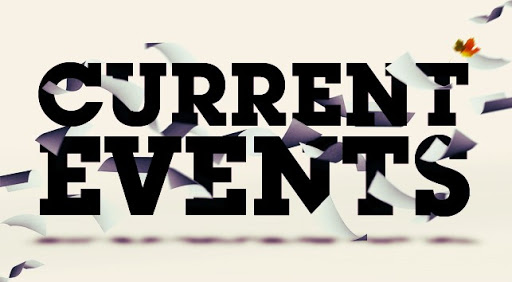Strategies for High School Educators
Introduction
In today’s polarized media landscape, teaching current events requires a thoughtful approach. High school educators must balance the need to present information honestly with the necessity of maintaining a neutral stance. This article offers strategies to help teachers navigate this complex task, ensuring a respectful and informative classroom environment.
Using Credible and Diverse Sources
Providing students with a variety of sources is essential for teaching current events. This not only exposes them to multiple perspectives but also encourages critical thinking and media literacy. Here are some strategies to achieve this.
- Incorporate Multiple Perspectives: Utilize news sources from across the political spectrum to present different viewpoints on the same issue. For example, pairing articles from The New York Times and The Wall Street Journal can help students see the spectrum of perspectives.
- Fact-Checking: Encourage students to verify information using reliable fact-checking websites such as FactCheck.org, Snopes, and PolitiFact. This practice helps students develop skills to discern credible information.
Promoting Critical Thinking
Critical thinking is a crucial skill in understanding current events. By teaching students to analyze and question the information they receive, educators can help them become more discerning consumers of news. The following strategies can be effective.
- Questioning: Teach students to ask critical questions about the news. For instance, “Who wrote this article?” “What are the sources?” “What might be the author’s bias?” These questions help students think more deeply about the information they consume.
- Analysis: Guide students in analyzing how different news outlets might frame the same story differently. This can involve comparing headlines, examining word choices, and identifying what information is emphasized or omitted.
Staying Neutral and Objective
Maintaining neutrality and objectivity in the classroom is essential for fostering a respectful learning environment. This allows students to explore their own viewpoints without feeling influenced by their teacher’s opinions. Here are some methods to achieve this.
- Present Facts, Not Opinions: Stick to presenting verifiable facts and avoid sharing personal opinions. This helps maintain a neutral classroom environment where students feel free to form their own opinions.
- Facilitate Discussions: Create a classroom environment where students can express diverse opinions without fear of judgment. Use structured discussions to ensure that all voices are heard respectfully.
Curriculum Alignment
Aligning your teaching with educational standards ensures that your approach is grounded in recognized educational frameworks. This alignment also provides a buffer against potential criticisms. Consider these strategies for alignment.
- Align with Standards: Ensure your approach aligns with school and state educational standards. Familiarize yourself with relevant standards and incorporate them into your lesson plans.
- Documentation: Keep detailed lesson plans and materials that demonstrate how you are teaching to the standards and promoting critical thinking. This documentation can be useful if your approach is questioned.
Transparent Communication
Open communication with parents and administrators can build trust and support for your teaching methods. This transparency helps prevent misunderstandings and conflicts. Here are some ways to maintain clear communication.
- Parental Involvement: Communicate with parents about your methods and goals in teaching current events. This transparency can build trust and preempt potential conflicts. Inform parents of the topics and schedule at the beginning of each semester.
- Administrative Support: Keep your administration informed about your curriculum and approach. Seek their input and support, ensuring alignment with school policies.
Classroom Rules and Culture
Establishing a classroom culture of respect and empathy is crucial when discussing current events. Clear rules and a supportive environment help facilitate meaningful and respectful discussions. Here are some tips to cultivate such a culture.
- Respectful Debate: Establish clear rules for respectful dialogue and debate. Define what respectful behavior looks like and model it in your interactions.
- Empathy and Understanding: Encourage empathy by helping students see issues from multiple perspectives. Activities such as role-playing or debates can help foster understanding.
Professional Development
Continuous professional development is vital for staying updated on best practices for teaching current events. Engaging in training and collaborating with peers can enhance your teaching methods. Consider these strategies for professional growth.
- Training: Participate in professional development focused on teaching controversial issues and current events. Resources such as Edutopia offer valuable training opportunities.
- Peer Collaboration: Work with colleagues to share best practices and support each other in teaching current events. Peer collaboration can provide new insights and strategies.
Example Lesson Structure
A structured lesson plan can help ensure that your approach to teaching current events is balanced and comprehensive. Here is an example structure to guide your lessons.
- Introduction: Present a brief overview of the current event.
- Source Comparison: Provide articles from different sources covering the same event.
- Critical Questions: Have students answer critical questions about the sources.
- Group Discussion: Facilitate a structured discussion where students share their insights.
- Reflection: Ask students to reflect on what they learned and how their views might have changed.
Hot Potatoes: Weekly Deliberations
In my classroom, every Friday, I conduct a deliberation, debate, or discussion about a current event, which I call “Hot Potatoes.” The focus of these sessions is on understanding others’ perspectives rather than determining what is right or wrong. At the beginning of each semester, I inform all parents about the topics and schedule. This regular practice helps students engage with current events in a structured and supportive environment. The resource I consistently go to is NFI (https://www.nifi.org/en/deliberation). They have a great process and a number of different deliberation toolkits that are ready to go.
Conclusion
Teaching current events honestly and effectively requires a balanced approach that promotes critical thinking, respects diverse perspectives, and aligns with educational standards. By implementing the strategies outlined in this article, high school educators can create an informed and respectful classroom environment that prepares students for engaged citizenship.




